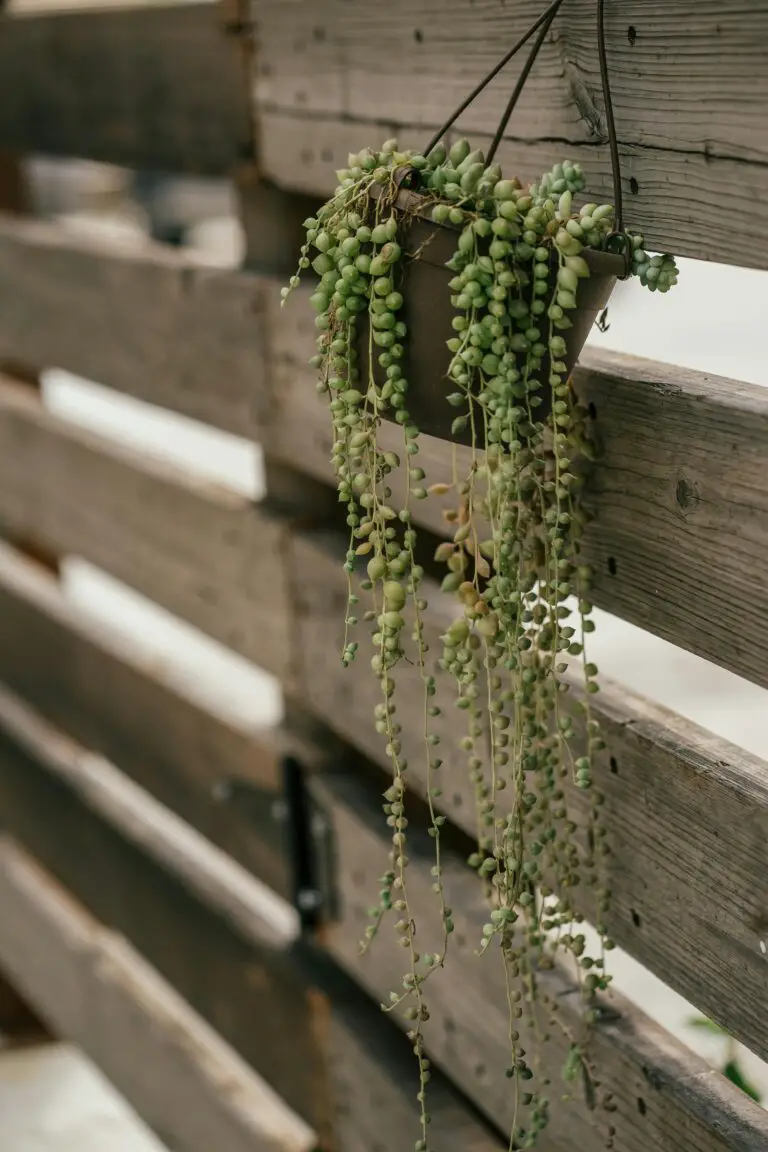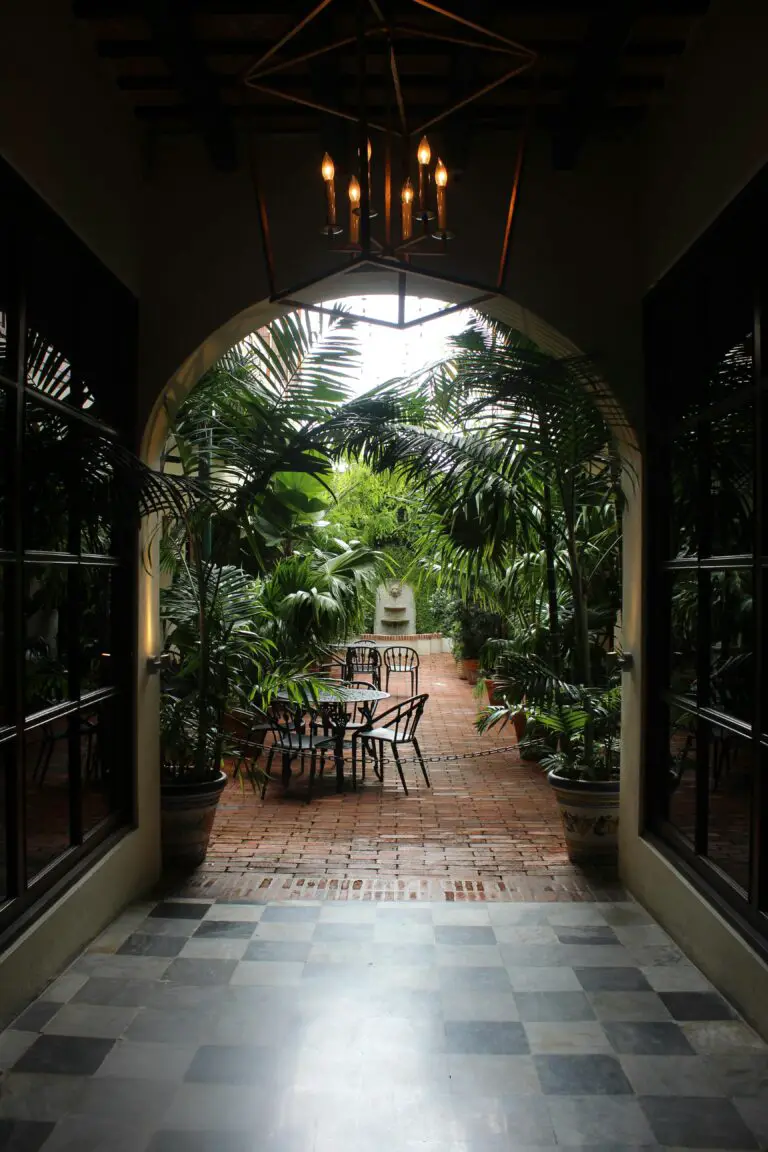Introduction to Senecio Angulatus
Picture a plant that cascades with such grace it could effortlessly embellish any garden corner, yet holds a dual reputation that sparks debates in the natural world. Senecio angulatus, commonly known as the Creeping Groundsel, is that botanical enigma. Emerging from the rich soils of South Africa, this hardy scrambler has found a fervent following amongst those with a penchant for lush, draping foliage and cheerful yellow blooms that brighten the green tapestry.
Senecio angulatus weaves its way through garden spaces, both adorning and conquering, raising both awe and alarm. The plant’s vining habit, coupled with leaves that hold a succulent plumpness, and the propensity to thrive with minimal fuss, makes it a darling of gardeners seeking a robust yet attractive ground cover. However, beneath its ornamental veneer, naturalists tread carefully, recognizing its potential to outpace native flora, reminding us of the fine line between decorative delight and ecological concern.
As the vanguard of many trellises and fences, this plant presents a verdant spectacle that is hard to miss. For anyone seeking to add a touch of the wild to their urban sanctuary, the Creeping Groundsel comes across as a charming choice. Yet, that same unrestrained spirit is precisely why experts monitor its spread in regions outside its endemic comfort zone; a testament to nature’s inherent push and pull. To learn more about this fascinating species and its global wanderings, consider visiting this thorough guide that elucidates its care and peculiarities.
Allowing us to appreciate the plant in its full glory, an image captures the distinctive beauty of the Senecio angulatus with its cascade of green and bursts of sunny flowers—for those who’ve witnessed it personally, it conjures memories of gardens draped in elegance, yet for the uninitiated, it might just spark a desire to know more about this botanical wonder.

In essence, the Senecio angulatus encapsulates the dual essence of our relationship with the plant world: the allure of its aesthetic and the responsibility to guard against its possible invasiveness—a balancing act as delicate as the plant itself, and as significant as the environments we hope to preserve.
Origin and Habitat: A Tale of Adaptation

When we embark on a journey to discover the birthplace of Senecio angulatus, also known as the Creeping Groundsel, we find ourselves traversing the diverse landscapes of South Africa. This fascinating succulent is a true master of adaptation, thriving in a variety of environments. But what is it about the Creeping Groundsel that allows it to so effortlessly conquer its surroundings?
The adaptability of Senecio angulatus begins with its native range—a land that presents a mosaic of challenging conditions. It’s here, in the rugged terrains and nutrient-poor soils, that the Creeping Groundsel begins its remarkable tale of survival. The plant’s fluid nature enables it to seamlessly mesh with both coastal regions and lush woodlands, always finding its place under the sun, literally and metaphorically.
How does this green marvel manage to flourish against the odds? Let’s take a closer look. Learn more about the adaptable nature of the Creeping Groundsel.
In the thriving coastal ecosystems, Senecio angulatus capitalizes on the sandy, well-draining soils to spread its roots far and wide. The plant’s inherent resilience has enabled it to expand its habitat beyond the borders of its origin. It enthusiastically embraces the warmth of the Mediterranean sun or the dappled shade in urban landscapes, illustrating a versatile character that’s hard to match.
For those seduced by the allure of succulents, a deeper exploration into various succulent types will unveil a realm of botanical treasures, each with unique strategies to stake their claim. Find inspiration by exploring the wonderful world of succulents and uncovering the secrets to their distinguished resilience.
Beloved by horticulturists and novice gardeners alike, the Creeping Groundsel’s habitat preferences serve as a lesson in ecological versatility. Whether it’s gracing a rocky alcove, adorning a garden trellis, or thriving amidst urban development, Senecio angulatus endures, blooms, and continues its tale of adaptation—a beautiful, living testament to nature’s ingenious design.
Identification Guide: Recognizing Senecio Angulatus
Embark on a botanical journey and learn to recognize Senecio angulatus, a species that paints the landscape with its unique form and vitality. This guide will help you distinguish it through a blend of observation, descriptive detail, and firsthand accounts.
Leaf Shape: A Signature of Senecio Angulatus
Paying close attention to the leaves of Senecio angulatus is like leafing through the pages of its identity. Each leaf, lance-shaped with serrated edges, is a green flag signaling the presence of this charming creeper. Imagine walking through a coastal garden and noticing how these leaves create a plush carpet, their forms a clue hidden in the open.
Flower Characteristics: Blossoms That Speak Volumes
The flowers of Senecio angulatus are storytellers, narrating tales of their origins with vivid yellow petals that circle around a central disc. They are like little suns, each one a miniature spotlight illuminating the plant’s identity. Look for them in the warmth of summer, where they stand atop the foliage, a beacon for those with a keen eye.
Growth Habits: The Spreading Groundsel
The growth habits of Senecio angulatus are a telltale sign of its nature. It creeps and it covers, it stretches with a purpose. Note how it advances across garden beds or climbs over rocks, each tendril an explorer charting new territories. Its persistent spread is a testament to resilience, a living tapestry woven from one season to the next.
Growing and Caring for Your Senecio Angulatus
Embracing the lush allure of the Senecio Angulatus means understanding the do’s and don’ts of its cultivation. This robust yet delicate creeper thrives with the right mix of care and attention, and here, we’re spilling the green-thumb secrets to keep your Creeping Groundsel not only surviving but radiating vitality.
Perfecting the Pots and Soil Mix
First things first, your Senecio Angulatus is a fan of cozy, well-draining pots where its roots can breathe and stretch without a soggy environment. Choose a pot with ample drainage holes and pair it with a soil mix that’s equal parts peat, perlite, and sand—a trio that’s sure to provide the perfect drainage and aeration scenario.
Lighting: A Delicate Balance
Now, let’s chat about sunlight because, just like us, your Senecio Angulatus loves basking in the morning rays but cringes at the scorching afternoon beams. Aim for a spot that gets bright, indirect light, something akin to a sun-dappled forest floor. Too much sun can leave your plant’s leaves sunburned and stressed, while too little will result in leggy stems reaching for the light.
Watering: The Art of Moderation
Watering is an art form, and your Senecio Angulatus is the canvas. Overwatering is the express lane to root rot, yet underwatering leads to a withering demise. Strike a balance by watering only when the top inch of soil is dry to the touch—enough to quench its thirst but not drown its roots. Imagine a light, refreshing drizzle rather than a torrential downpour for your verdant friend.
Feeding Finesse
Feeding your Creeping Groundsel is much like seasoning a gourmet meal—it’s all about finesse. During the growing season, a half-strength, balanced fertilizer once a month will do wonders. It’s like a monthly spa treatment, rejuvenating and reinvigorating your plant’s lush foliage.
Integrate these care elements with genuine enthusiasm, and you will create an environment where your Senecio Angulatus cannot help but flourish. Just like the delicate balance in nature, finding harmony in its care will translate into a thriving, effervescent ground cover that captures the eyes and hearts of all who gaze upon it.
For a visual guide on the care of this charming plant, let’s take a look at a video full of practical advice:
Remember, every plant has its own personality, and the Senecio Angulatus is no exception. Treat it with care, observe its behavior, and adapt your care routine to what it tells you. With these tips in mind, you’ll be well on your way to cultivating a lush, green companion that’s both a joy to look at and a testament to your gardening prowess.
The Beauty and Risks of Senecio Angulatus
With its lush cascade of foliage and cheerful, daisy-like blossoms, Senecio angulatus — commonly known as the Creeping Groundsel — captivates at first sight. From the Mediterranean to your backyard trellis, it’s no wonder this vigorous vine has found its way into the hearts of garden enthusiasts. Its robust nature allows it not only to flourish with minimal care but also to display an exquisite tapestry of green that comes to life with bursts of brilliant yellow flowers.

While gardeners prize Senecio angulatus for its rapid growth and ability to provide quick coverage, these very characteristics can become a double-edged sword. In regions where it has been introduced, this flamboyant creeper often stretches beyond the confines of its planting, becoming an invasive force in delicate ecosystems. In places like Portugal, it wraps itself around native flora with an embrace that threatens biodiversity.
Consider a stroll through a coastal landscape where Creeping Groundsel has taken root. Here, you’ll observe a vivid example of its invasive prowess, overtly claiming territory and outcompeting local vegetation. It’s a sobering reminder that the attributes making Senecio angulatus a popular ornamental choice also contribute to its potential to overtake other greenery when natural checks and balances aren’t in place.
To truly appreciate the duality of this succulent’s nature, you might want to delve into the world of other succulents, understanding how they uniquely adapt and flourish in various habitats. These living examples underscore the importance of responsible horticulture and the careful monitoring of non-native species.
The tale of Senecio angulatus is as much a story of beauty as it is a cautionary one. Gardeners and ecologists alike must balance admiration with vigilance to ensure that the charm of this Creeping Groundsel remains a visual delight, not an ecological plight.
Propagation Techniques for Novice Gardeners
Welcome to the world of gardening where the Senecio angulatus, also known as the Creeping Groundsel, beckons you to try your hand at propagation! Don’t worry if your thumbs are more tech-savvy than green; this guide is crafted for the novice gardener eager to learn the ropes. Let’s roll up our sleeves and delve into the gratifying process of coaxing new life from this charmer of the plant world.
Getting Started with Cuttings
Picture this: it’s a sunny afternoon, and you’re snipping away at your flourishing Senecio angulatus. Those cuttings you’re making? They’re the key to new plantlets. Seeking cuttings from healthy mother plants ensures the best start for your propagation journey. Aim for segments about 4 to 6 inches in length, with a handful of leaves adorning the top.

Rooting Your Future Groundsel
Next, take those freshly minted cuttings and let them air-dry for a day or two, allowing the cut ends to callous over. This step is the unsung hero of propagation—it helps prevent rot and invites a stronger rooting response. Now, gently plant your cuttings in a mix of well-draining soil and sand, mimicking the native habitat of Senecio angulatus. Water it as if you’re misting morning dew and offer a spot with bright, indirect sunshine—a windowsill, perhaps?
Caring for Your Baby Creeping Grounsel
In the world of gardening, patience is more than a virtue; it’s a necessity. Your cuttings will need time to develop roots and acclimatize to their new environment. Resist the urge to tug at them; roots are delicate in the early stages. In just a few weeks, you’ll notice new growth, a true testament to your gardening prowess. Remember to water sparingly, as young Senecio angulatus plants prefer to stay on the drier side.
And there you have it: From just a cutting, you’ve provided a sustainable future for your own Creeping Groundsel. It’s a simple yet profound cycle of growth—a slice of botanical magic right in your own living space. Keep nurturing your green oasis, and before you know it, you’ll have transformed from a novice to a seasoned gardener, with the whispering fronds of the Senecio angulatus as your backdrop.
Pests, Diseases, and Senecio Angulatus: Prevention and Treatment
Picture this: a vibrant patch of Senecio angulatus, with its cheerful yellow blooms and lush foliage, becoming the envy of your gardening circle. Now, imagine the horror as you discover a colony of aphids turning your prized plant into an all-you-can-eat buffet. Gardening is not just about the joy of growing; it’s about the battles against the tiny foes that target our beloved greens. Let’s arm ourselves with knowledge and tackle these threats head-on, shall we?
Common Invaders: Know Your Enemy
First things first, let’s meet the culprits. Aphids, mealybugs, and spider mites are the usual suspects when it comes to Senecio angulatus ailments. These pests are like the undercover agents of the insect world – small, stealthy, and devastatingly effective at wreaking havoc on your plants. Remember that time you spotted some mysterious sticky residue on the leaves? That’s the handiwork of aphids, setting up shop and sapping the life out of your precious groundsel.
The Preemptive Strike: Prevention Tactics
Now, for the proactive gardener, defense is the best form of attack. Keep these critters at bay with a few clever strategies. One such tactic is to welcome natural predators into your garden – think ladybugs and lacewings, the unsung heroes in the bug world. These beneficial insects are like living pest control, munching on the bad guys so you don’t have to.
Another frontline defense is cleanliness. A tidy garden is a pest-resistant garden. Regularly remove dead leaves and debris, because who wants to give these pests free accommodation? Not you! And let’s not forget about proper spacing and airflow; these can reduce the chance of fungal diseases that often follow an insect infestation.
Battling the Beast: Treatment Approaches
So you’ve spotted some telltale signs of trouble. Fear not! Let’s talk treatment. The go-to move for many gardeners is insecticidal soap or neem oil – they’re like the nectar of the gods for plants under siege. Apply with vigilance and you’ll send those pests packing. But remember, more is not always better. Follow the instructions carefully; we’re here to cure, not to overdo.
What about diseases, you ask? Fungal foes like powdery mildew can also be a menace to your Senecio angulatus. When bad weather strikes and your plant’s leaves start sporting unwelcome white spots, it’s time for action. Fungicides can be effective, but there’s also a range of home remedies that can work wonders. Think of baking soda sprays as the homeopathic option to plant healthcare – gentle, natural, and surprisingly effective.
Alas, we currently don’t have a video to show you the ropes visually, but don’t let that curb your enthusiasm. Garnering expert advice from a local nursery or trusted online resources can provide you with a plethora of visual aids to guide your quest for a pest-free garden.
Remember, gardening is not just a pastime; it’s a pursuit filled with challenges and triumphs. Keep your spirits high and your eyes peeled. With these prevention and treatment strategies up your sleeve, you’re well on your way to protecting your enchanting Senecio angulatus against the tiny adversaries that lurk in the shadows, waiting to attack.
Creative Landscaping with Senecio Angulatus
Picture this: a cascade of soft, verdant tendrils spilling over a stone wall, each leaf intricately etched with nature’s own patterns. That’s Senecio Angulatus for you—a versatile ground cover that could be the missing touch in your garden’s tapestry. Now, let’s talk about how this unassuming, yet captivating plant can redefine your green space.
Imagine a quaint cottage, its pathway lined with the cheerful, lobed leaves of the Senecio Angulatus. As you stroll along, the groundsel’s playful tendrils cradle your steps, a living green carpet that invites you into a world of botanical charm. This isn’t just any garden; it’s a narrative, where Senecio Angulatus plays a starring role.

Ever considered a ‘vertical’ spin to your garden design? Picture a robust trellis, now weave in the vigorous strands of the Senecio Angulatus. It climbs with grace, transforming a simple structure into a vibrant, breathing wall of green. This plant not only adds volume to your garden but it creates a sense of multi-dimensional beauty—the leaves chatter in the wind, bringing movement and life to static scenes.
But, why stop at the ground or the vertical plane? Let’s talk hanging baskets and elevated planters. The dangling foliage of Senecio Angulatus is a spectacle when elevated. It brings a spontaneous charm to high-rise balconies, or even when accenting a lonely patio corner, infusing the air with whimsical greenery as it overflows its lofty perch.
For the pragmatists among us, Senecio Angulatus is more than just ornamentation—it’s a hardy trooper that weaves itself across difficult soils, softening harsh landscapes with its forgiving growth. It’s not picky, making it a darling of gardeners who face the challenge of less-than-ideal soil conditions. Use it to outmaneuver erosion, or simply to bring life to that troublesome patch of the garden you’ve been meaning to deal with.
Finally, let’s chat about companion planting. The beauty of Senecio Angulatus is that it’s a fantastic team player. Pair it with flowering bulbs for a study in contrasts—blazes of floral color bursting through a sea of green. Or, mix it with herbs to create a multi-sensory experience; the textures and aromas will make for a memorable journey through your garden nook.
In every setting, Senecio Angulatus serves as versatile greenery with the power to transform. So go ahead, get creative with this charming creeper and watch your garden narrative unfold in ways you never anticipated.
Essential Tips for Long-Term Success
Embrace the quirky beauty of Senecio Angulatus, more fondly known as the creeping groundsel, and join the community of plant enthusiasts who’ve made this their favorite. But beyond its alluring charm, lies a challenge that all green thumbs are eager to conquer: ensuring that it thrives for years to come. Let’s dive into some easy-to-follow advice that’ll keep your Senecio Angulatus vibrant and flourishing.
Understanding the Groundsel’s Groove
Initially, realize that this ground-hugging succulent from South Africa adores a sunny dance floor. Mimic its natural habitat by granting it plenty of sunlight. Yet, like any good dancer, it doesn’t want to burn out. Ensure it wears the right ‘sunscreen’ by providing some dappled afternoon shade. Too much intensity, as any sunbather will tell you, can lead to a crispy demise.
Watering Wisdom
Water is the elixir of life, but with Senecio Angulatus, think of it as a fine wine—best served sparingly. Overwatering is the pitfall of impatient plant parents, leading to sogginess and rot. The key is infrequent yet deep watering, encouraging roots to seek hydration and become strong anchors. Imagine the plant’s joy when, after a dry spell, it drinks deeply, just as a marathon runner values a refreshing gulp at the final mile.
Nutrients and Feeding Finesse
Consider the diet of an athlete during training; balance is essential. Your creeping groundsel may not be running a race, but it still requires a blend of nutrients to perform its best. A slow-release fertilizer offered at the start of the growing season is like a hearty breakfast for your plant—setting it up for a day of success.
Beware of Overzealous Companions
While companionship in the plant world is often beneficial, overcrowding can lead to a survival-of-the-fittest scenario. Isolate your Senecio Angulatus if you notice aggressive neighbors trying to overshadow it. Remember that one time you were stuck in the middle seat on a packed flight? Your plant feels the same way when crammed in a bed of assertive flora.
Incorporating these simple yet effective tips will put you on the path to being a proud owner of a robust and resilient Senecio Angulatus. And for a closer look at how to care for this succulent sweetheart, check out this informative video that compares the care of two Senecio species:
Frequently Asked Questions about Senecio Angulatus
Cracking into the world of gardening with Senecio angulatus, or as some green thumbs might call it, the Creeping Groundsel, can be quite the adventure. This vigorous climber is not just about its charming foliage; it’s got a story to tell, and some quirks to address. So, let’s dig into those burning questions you’ve been rooting around for.
Caring for Your Creeping Groundsel: How Do I Keep It Happy?
To see your Senecio angulatus flourish, picture this: a warm sunny spot, moderate watering (let’s not douse its spirit!), and a free-draining compositional solo where its roots can belt out their natural rhythm. It’s the equivalent of finding that sweet spot at a concert – not too close to the speakers, but close enough to feel the beat. One green thumbs’ insider tip: a little pruning encore post-blooming season keeps those performances tight and energetic – and yes, we’re still talking about plant care!
Can Senecio Angulatus Be an Environmental Encore or a Problematic Solo?
Even with its undeniable charm, Senecio angulatus doesn’t always stick to its part of the script. In some regions, this plant has been known to ad-lib, stealing the spotlight from local flora and throwing ecosystems out of tune. In places like Australia and New Zealand, our Creeping Groundsel has been cast as an invasive species, capable of growing over and shading out the local vegetation like an overzealous understudy. Before you invite it on stage, make sure it’s not going to upstage your local ecological theater.
Is it Legal to Cultivate Senecio Angulatus?
Speaking of legality, this is where Senecio angulatus hits a bit of a dramatic note. Depending on your locale, there might be restrictions, regulations, even total bans on cultivating this plant. It’s like a controversial artist whose work is adored by some and restricted by others. Always check the local legislation – because while you might be eager to see this groundsel grow, you certainly don’t want to see your gardening dreams tangled up in red tape.
It’s clear that Senecio angulatus requires a bit of a nuanced approach – a blend of care and caution. But with the right conditions and knowledge, you can enjoy the unfolding saga of your own Creeping Groundsel, without any unexpected plot twists.



